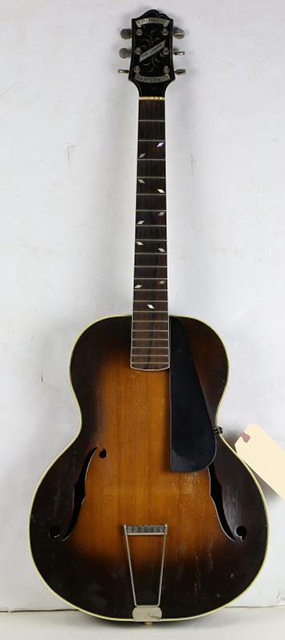

- Epiphone model number lookup how to#
- Epiphone model number lookup serial numbers#
- Epiphone model number lookup serial number#
- Epiphone model number lookup pdf#
I am looking for Fender guitars in this serial number range applied to the bridge plate so you can contact me here to sell a Fender guitar.Ġ001 – 0999 1950, 1951, 1952 Contact me if you have a Fender in this range
Epiphone model number lookup serial numbers#
You can find these serial numbers on the metal plate in the middle of the body between the pickup and where the strings attached. Some of the earliest Fender serial numbers were applied to the bridge plate on the Fender Broadcaster, Fender (no model name, often called the Nocaster), and Fender Esquire.
Epiphone model number lookup how to#
How to date a Fender Jaguar Fender Serial Numbers on the bridge plate

Here are some model specific articles on Fender guitar dating: As a Fender guitar expert, I can help you date your Fender guitar with neck and body dates, potentiometer codes, and more importantly the features. You can use this list of Fender serial numbers for an easy serial number lookup, then go further into dating your Fender guitar with a Fender guitar expert. The serial number on a Fender guitar can be a quick and easy way to begin the process of dating your Fender guitar. Keep in mind that Fender serial numbers are not necessarily consecutive and easily swapped out using only a screwdriver.
Epiphone model number lookup pdf#
Last 4 digits: Production sequence number.Įpiphone hasn't released particulars of the letter ID codes at this point.Ī reference to Epiphone serial numbers is available at in PDF (Adobe Acrobat) format.Here is a nearly comprehensive list of Fender serial numbers to help you with how to date a Fender guitar. Korean-made Epiphones have a letter (manufacturer's ID code) and a 7 or 8-digit serial number as follows:įirst digit (7) or first 2 digits (8): Year of manufacture. Gibson-built Epiphones followed the Gibson serial numbering scheme. Original Epiphones had a number of different serial numbering schemes, depending on the year. The exception to this is the Japanese-era guitars the serial numbering doesn't seem to have followed any sequential pattern from year to year, which makes it *very* difficult to date them accurately. Most Epiphones can be dated fairly accurately by their serial numbers. With some exceptions, Epiphones are made in Korea to this day. In 1983, around the time that Gibson was bought by a group headed by Henry Juszkiewicz (now President of Gibson USA), Epiphone production was contracted to Korean companies, most notably Samick (of which Epiphone/Gibson owns a significant percentage). The Japanese Epis are good guitars, but they suffered both the 'Made in Japan' and 'Norlin' stigmas they've always been under-rated as a result. Epiphone production was contracted to companies in Japan in order to cut costs.

In 1969, Norlin Industries bought the Chicago Musical Instrument company (which owned Gibson at the time), which heralded the 'Dreaded Norlin Era' at Gibson, in which the quality declined greatly. This worked well for both Gibson and Epiphone, because it allowed music dealers who couldn't get an official Gibson franchise (which were *very* strictly enforced in those days) to get an Epiphone (which had become a quasi-Gibson) franchise instead.

That led to Gibson building Epiphones in the Gibson factory the first few years (1958-61), Gibson used up all the old parts, and in the early 60's, used Gibson parts. Gibson President Ted McCarty (who recently passed away R.I.P., Ted) negotiated a deal to buy out Epiphone's upright bass business, but when the equipment was moved to Gibson's Kalamazoo factory, McCarty found out that *all* of Epiphone's equipment, tooling, and parts inventory had been included. Conn company (best known for band and orchestral instruments), and was all but out of business. In 1957, Epiphone was tenuously clinging to existence the company had been bought out by the C.G. That was the era of the legendary archtops like the Regent, Broadway, Deluxe, etc. The original Epiphone factory was in New York, when the company was owned and operated by the Stathopoulo family. Charlie, if this has been posted before please delete it or move it.


 0 kommentar(er)
0 kommentar(er)
